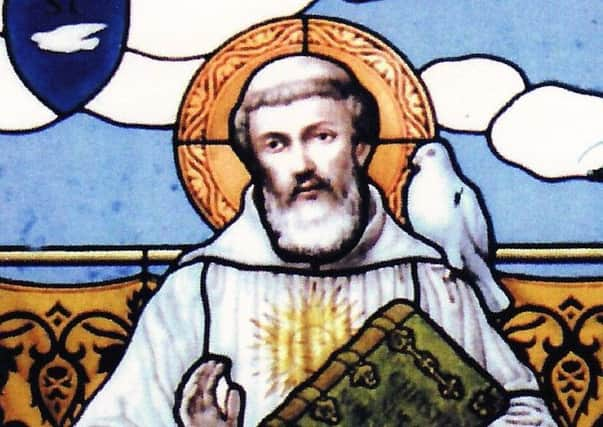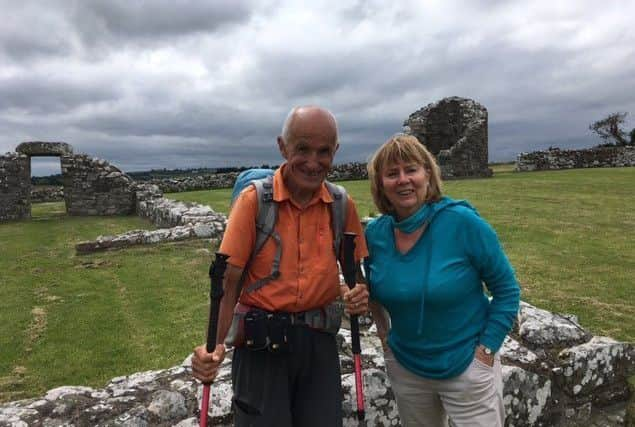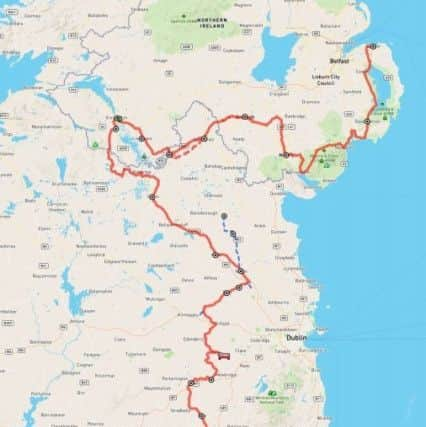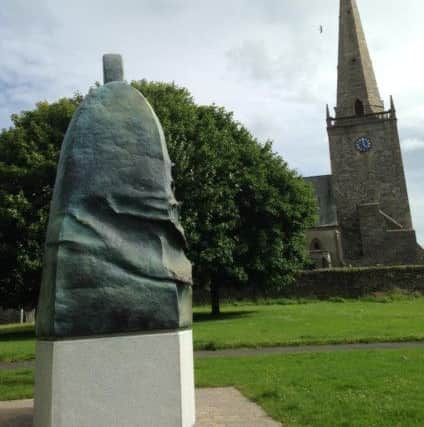Northern Ireland features in new walking route of monk who united Europe


Alderman Deborah Girvan – an Alliance councillor on Ards and North Down Borough Council – is the new president of the European Association of the Columban Way, which aims to signpost the pilgrimage taken from Ireland to Europe by Columbanus.
With the exception of Bangor – where the monk’s legacy is commemorated on an annual basis – Columbanus, also called St Columban, is not a widely-known figure in Northern Ireland.
Advertisement
Hide AdAdvertisement
Hide AdIn her new role Deborah aims to change that while working with others across Europe to create a walking route to rival the likes of Camino de Santiago in Spain.


She said: “Columbanus has been acknowledged as the person who brought Christianity to Europe. He was quite a formidable character by all accounts.
“He set up a number of monasteries, they’re all ruins of course now, like Nendrum [on Mahee Island in Strangford Lough]. We’re talking about nearly 1,500 years ago.”
The walking route under development celebrates the story of the monk Columbanus, born in Leinster in 543 AD and his disciple Gall.
Advertisement
Hide AdAdvertisement
Hide AdColumbanus studied on Cleenish Island in Fermanagh and completed his training at Bangor Abbey under the leadership of St Comgall.


In 591 AD, he left to travel throughout Europe. He spent 20 years in Luxeuil in France and died in Bobbio in Italy in the foothills of the Appenines in 615 AD.
According to Robert Schuman – one of the founding fathers of the European Union – Columbanus is “the patron saint of all those who now seek to build a better Europe”. The term ‘Europe’ was first used to refer to a geographical entity in his writings.
Deborah said: “In Bobbio they revere Columbanus. The French likewise. There are schools named after him and streets named after him all along the path his took through France.
Advertisement
Hide AdAdvertisement
Hide Ad“They celebrate him a lot more in Europe than we do here, with the exception maybe of Bangor where there is a weekend of events to commemorate Columbanus.”


This year in the town, church services and talks will take place at St Comgall’s Church Hall, Bangor Abbey and First Bangor Presbyterian Church on the weekend of November 24 and 25.
In Northern Ireland, the Columban Way will join the route from the south of Ireland at Cleenish Island on the lakes of Fermanagh and travel to Armagh where it will pick up on the already established St Patrick’s Way through Newry, Rostrevor, Newcastle and on to Downpatrick.
From Downpatrick, the route will continue northward to Killyleagh, Nendrum monastic site, Comber, Movilla Abbey in Newtownards and end in Bangor where Columbanus spent 20 years of his life at Bangor Abbey.
Advertisement
Hide AdAdvertisement
Hide AdDeborah said: “The Irish leg of the journey is about 400 miles. Each of the council areas will be doing their own signposting whenever they get organised. It’s still in the development stage, but people are already starting to walk it.
“I met a retired colonel in the French army, Simon Derache, who walked the entire route through all the countries in summer 2017. I met him at Nendrum when he walked the NI part of the journey.”
She said: “This is a huge but exciting project and I do not underestimate the challenges that lie ahead.
“I’m communicating in three languages – English, French and Italian, interpreting legislation and regulations across European territories and building relationships across borders.
Advertisement
Hide AdAdvertisement
Hide Ad“In preparation for my new role, I have been learning Italian and have brushed up on my French.”
Deborah commented: “Regardless of the outcome of Brexit and in an era of intolerance and uncertainty, I believe that the Columban Way could become a symbol for peace and understanding.
“It could become one of the most dynamic cultural routes in Europe. It could become a platform for scientific, educational and cultural exchanges. It could also bring much needed economic and tourism benefits to all the regions that the route passes through.
“It has great potential to boost tourism. I’m expecting not just hundreds but thousands coming to Ireland and doing pieces of the route.”
Advertisement
Hide AdAdvertisement
Hide AdUpon completion the Columban Way will become the second longest pilgrimage route in Europe, after the Camino de Santiago.
Deborah said: “My goal would be to mirror the Camino de Santiago, a spiritual walk which attracts thousands of people to Spain every year.”
During the last Holy Year in 2010 more than 272,000 pilgrims made the trip to Camino de Santiago.